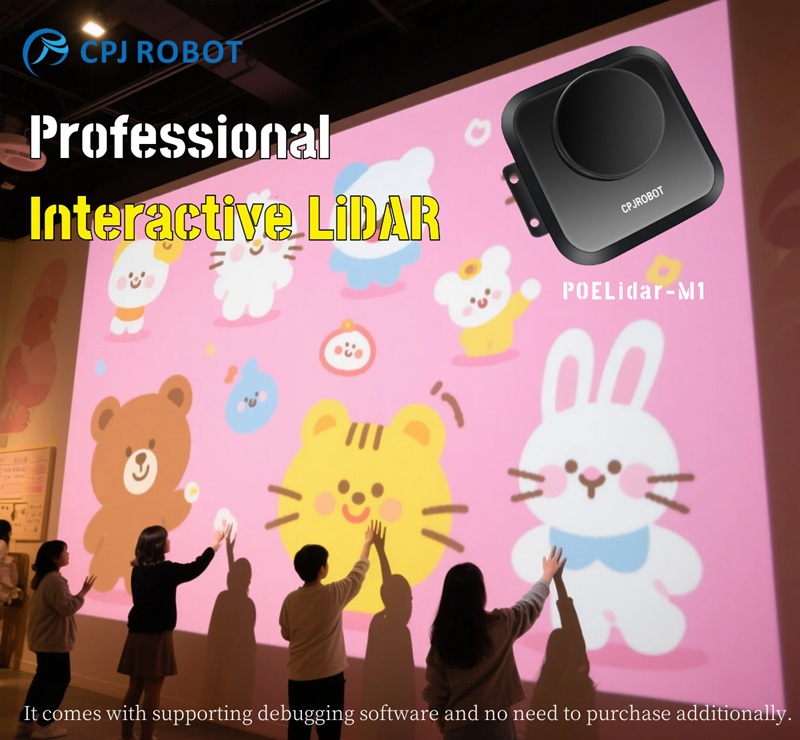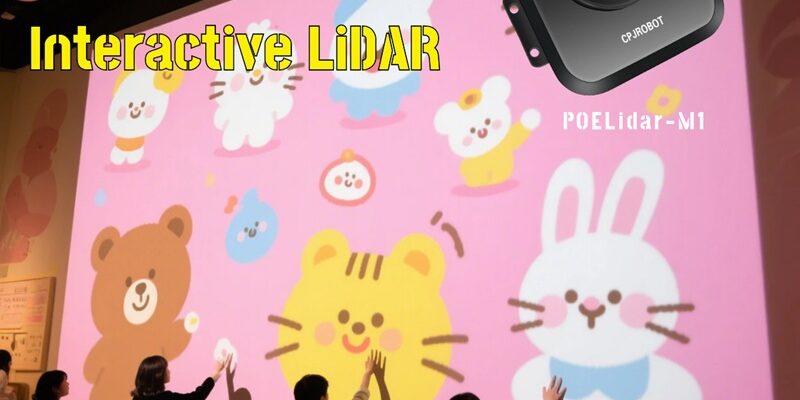Introduction: The Evolution of Interactive Display Technology
In recent years, interactive wall systems have become a core element in digital exhibitions, entertainment venues, and immersive brand experiences. From infrared touch systems to Kinect body-tracking and LiDAR-based interaction, these technologies enable users to engage with digital content through gestures, movements, and multi-touch responses.
Among them, LiDAR interactive walls stand out as a next-generation solution that combines flexibility, precision, and real-time performance for both indoor and outdoor environments.

LiDAR Interactive Wall: High Precision and High Flexibility
How It Works
A LiDAR interactive wall uses laser scanning sensors to map a surface such as a wall, floor, or table. By measuring distance and motion through light waves, it can detect precise user interactions — such as gestures, touches, or even movement near water surfaces.
Advantages
- Multi-point touch interaction: Detects multiple touchpoints simultaneously on any surface
- Versatile surface support: Works on irregular walls, curved structures, and even water
- Strong anti-interference: Unaffected by bright light or shadows, ideal for outdoor use
- Simple installation: Supports ultra-large, frameless interaction areas
- Natural, contactless experience: Users can interact without physically touching the screen
Limitations
- Higher cost: Compared to simple infrared systems, LiDAR solutions are more advanced
- Algorithm complexity: Requires strong computing and calibration for accurate response
In summary, LiDAR interactive walls deliver unmatched precision and scalability, making them ideal for exhibitions, museums, commercial showrooms, and outdoor digital installations.
Kinect-Based Interaction: Motion Capture for Human Body Tracking
How It Works
Kinect technology is based on structured light or time-of-flight (ToF) sensors that capture 3D body movement and skeletal tracking. It recognizes human posture and gestures, enabling interactive experiences such as dancing, fitness training, and motion-controlled games.
Advantages
- Mature technology: Proven in motion capture and gesture-based applications
- 3D tracking capability: Recognizes complex body movements and gestures
- Developer-friendly ecosystem: Rich SDKs and community resources for integration
Limitations
- Limited environmental adaptability: Works best indoors; struggles in bright or outdoor conditions
- Susceptible to occlusion: Accuracy decreases when users are partially blocked or too far from the camera
- Fixed interaction range: Requires proper spacing between the device and users
Kinect-based systems remain strong for education, gaming, rehabilitation, and training environments where full-body motion tracking is essential.
Infrared (IR) Interaction: Simple and Cost-Effective
How It Works
Infrared systems use light beams or sensors to detect interruptions or reflections caused by a user’s hand or finger. They are commonly found in touchscreens, kiosks, and short-range interactive displays.
Advantages
- Low cost: Affordable and easy to integrate
- Fast response: Ideal for near-distance touch detection
- Mature technology: Widely used in commercial touch applications
Limitations
- Limited range: Effective only at short distances
- Light interference: Performance affected by sunlight or strong illumination
- Not suitable for outdoor or large-scale displays: Easily disrupted by environmental factors
Infrared systems are best suited for indoor, close-range touch applications, such as kiosks, digital signage, and touchscreen tables.
Feature Comparison Table
| Feature | LiDAR Interactive Wall | Kinect-Based System | Infrared System |
|---|---|---|---|
| Interaction Mode | Contactless multi-touch | 3D motion/body tracking | Point-to-point touch |
| Environmental Adaptability | Works in bright light and outdoors | Indoor only, light-sensitive | Indoor only, easily affected by light |
| Precision | High precision; supports irregular and water surfaces | High body tracking accuracy; affected by occlusion | High for short range; low for distance |
| Installation Complexity | Simple; flexible configuration | Moderate; requires proper setup | Simple and low-cost |
| Cost | Higher | Medium | Low |
| Application Scenarios | Exhibitions, outdoor ads, creative displays | Gaming, rehabilitation, education | Touchscreens, kiosks, small-scale displays |
Summary: Choosing the Right Technology
Each system offers unique benefits depending on your goals and environment:
- LiDAR Interactive Wall: Best for large-scale, multi-user, and outdoor applications requiring flexible, contactless interaction.
- Kinect System: Ideal for motion tracking and body gesture control in controlled indoor environments.
- Infrared System: Perfect for small, budget-friendly, close-range touch-based installations.
In short, LiDAR interactive technology delivers the highest precision and adaptability, making it the preferred choice for future-ready interactive experiences.
Why Choose CPJ ROBOT’s POE LiDAR Interactive Solutions
CPJ ROBOT is a leading manufacturer specializing in POE interactive LiDAR systems and reception/navigation robots. The company provides end-to-end solutions for interactive walls, projection systems, and intelligent service robots.
Key Advantages
- Plug-and-play POE LiDAR sensors — simple setup, power and data via one cable
- Free testing software for calibration and interactive content development
- High-precision detection enabling multi-touch and gesture-based control
- Custom development for museums, exhibitions, and entertainment spaces
With CPJ ROBOT’s technology, any surface — wall, floor, or even water — can become a dynamic, interactive experience.
Frequently Asked Questions (FAQ)
Q1: Can a LiDAR interactive wall be used outdoors?
Yes. Unlike infrared or Kinect systems, LiDAR performs reliably in bright light or outdoor environments.
Q2: Does LiDAR interaction require physical contact?
No. The system is fully contactless — users can interact simply by moving their hands or bodies near the projected surface.
Q3: How many users can interact at the same time?
CPJ ROBOT’s LiDAR system supports multi-user and multi-touch interaction, allowing several participants to engage simultaneously.
Q4: What software can be used to develop interactive content?
You can integrate the LiDAR data into Unity, Unreal Engine, or TouchDesigner for custom game or exhibition experiences.
Q5: Is the installation process complicated?
No. CPJ ROBOT provides POE LiDAR sensors that are easy to mount, calibrate, and integrate — even for large-scale walls.
Conclusion: The Future Belongs to LiDAR-Based Interaction
While Kinect and infrared systems each have their place, LiDAR interactive walls are shaping the next generation of digital interaction. With superior accuracy, scalability, and adaptability, they unlock endless creative possibilities for exhibitions, events, and immersive entertainment.
✨ Ready to upgrade your interactive wall experience?
Discover how CPJ ROBOT’s POE LiDAR can transform any surface into a responsive, touch-free display.
Contact CPJ ROBOT today for customized LiDAR interactive wall solutions and start creating the future of digital engagement.







